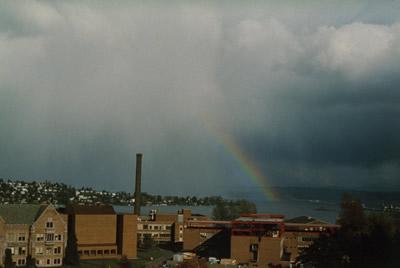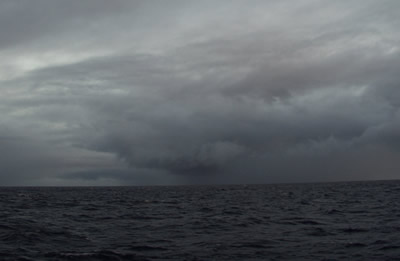Click on image for full size
Courtesy of University Corporation for Atmospheric Research
Rain
Rain is precipitation that falls to the Earth in drops of 5mm or more in diameter according to the US National Weather Service. Virga is rain that evaporates before reaching the ground.
Raindrops form when millions of tiny water droplets collide together in clouds to form larger ones. Eventually, they become too heavy and fall out of the clouds as rain.
Nimbostratus clouds and cumulonimbus clouds commonly produce rain. Very small raindrops are called drizzle. Stratus clouds or stratocumulus clouds can sometimes produce a light mist or drizzle.
Although they look like teardrops in cartoons, a raindrop is not really that shape. A raindrop's shape is dependent on its size. Typical raindrops are shaped like hamburger buns because of the large air pressure on the bottom of the drop that flattens it. A lower air pressure on the sides of the drop let the raindrop expand in size. The place with the greatest average yearly rainfall in the United States is on the island of Kauai in Hawaii with 40 inches (1 meter).
Have you ever noticed an earthy smell in the air that often comes out before it rains? The odor may be from bacteria in soil that produces an aromatic gas. These gases are pushed into the air as rain falls on the soil. Winds are the reason the smell may hit you before the rain shower.
Acid rain is a mix of water and acidic air pollutants from power plants, factories, houses, and cars. This type of rain can have harmful effects on our ecosystems. Acid rain falls on industrialized areas with large amounts of pollution. It also falls in places that are downwind from air pollution sources.















